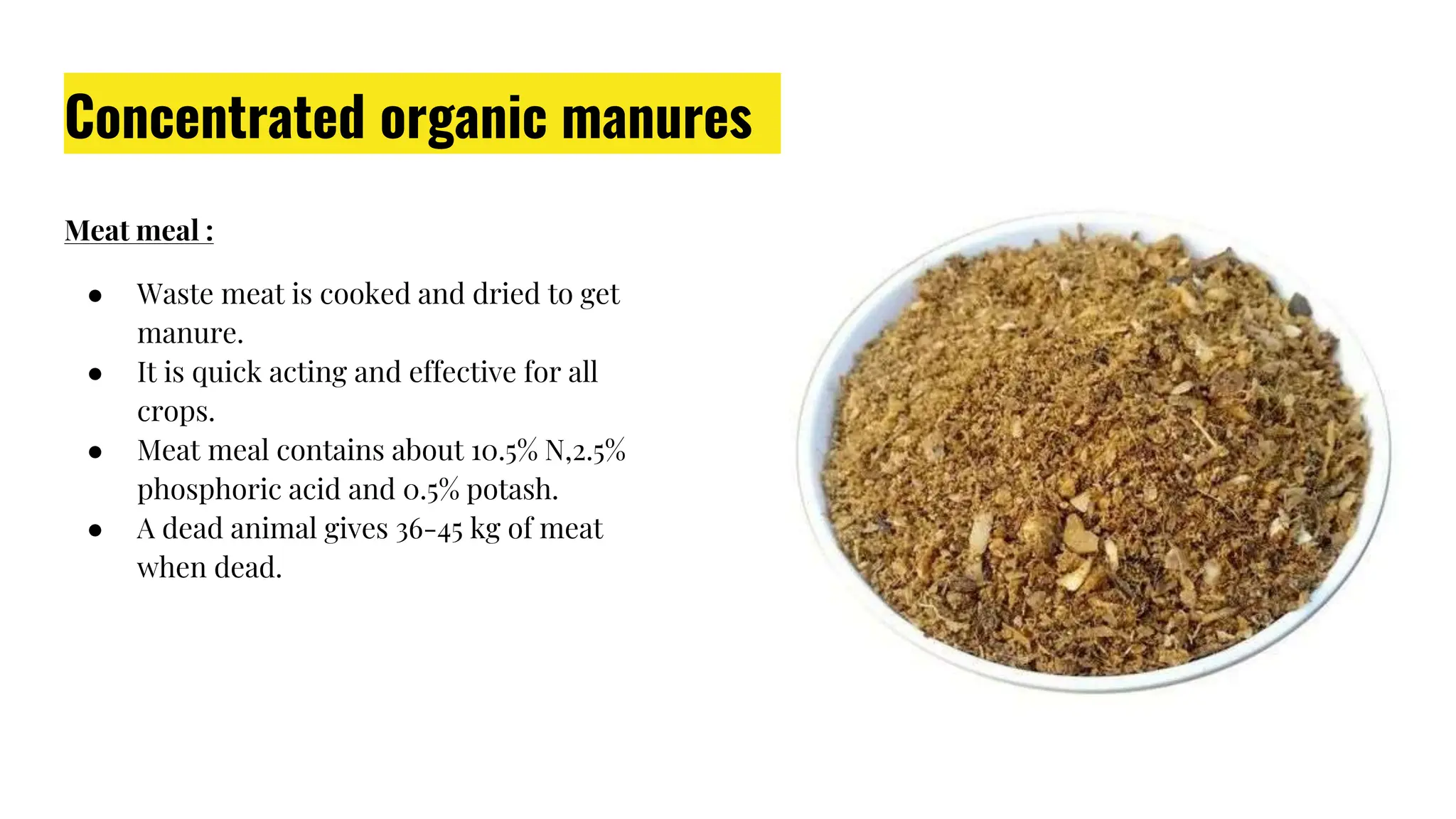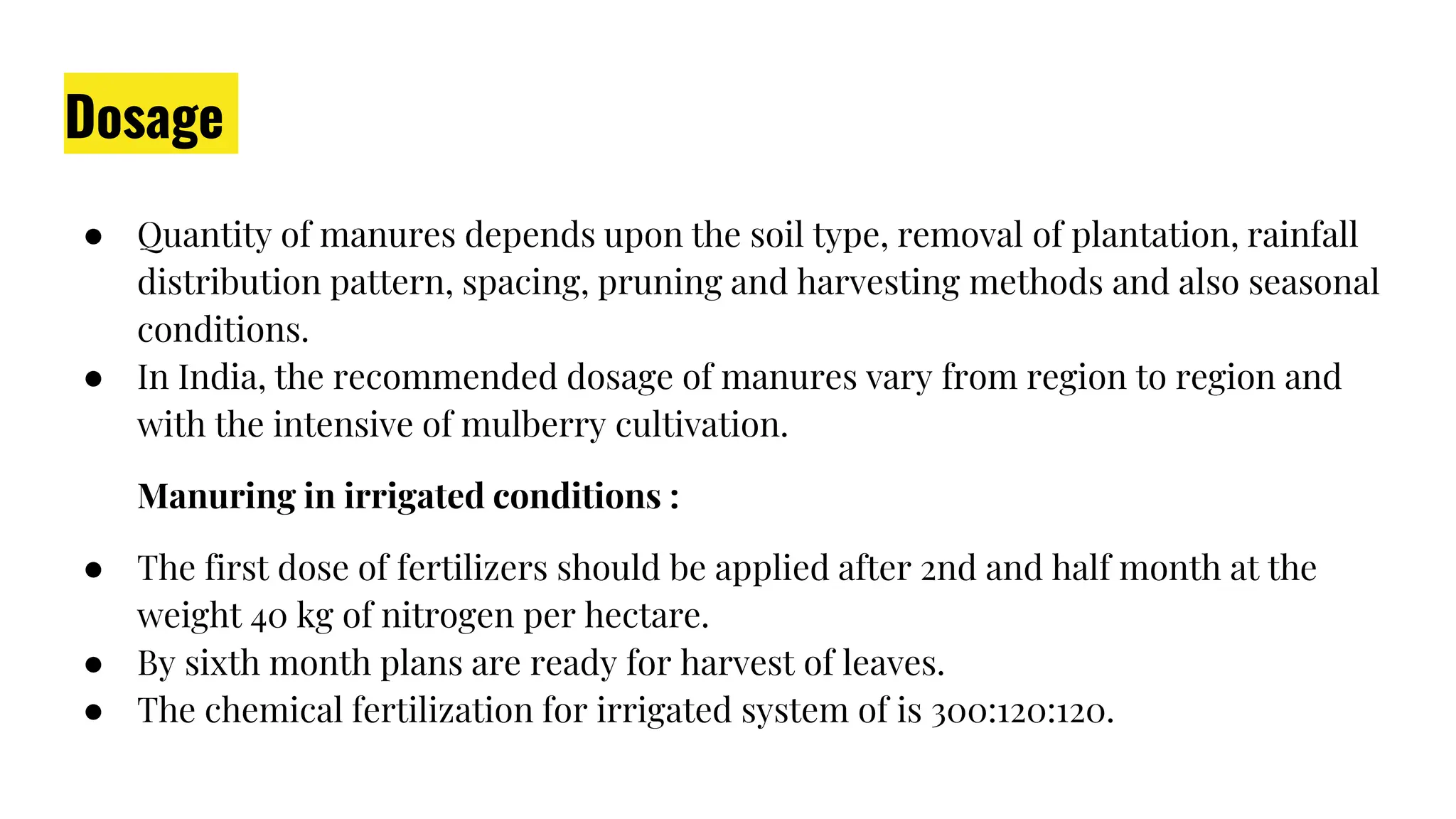The document discusses manure types and their benefits for soil fertility and crop production, distinguishing between organic and inorganic manures. It elaborates on various organic manures, including bulky, concentrated, and green manures, as well as their nutrient content and application methods. Additionally, it explains the advantages and disadvantages of both organic and inorganic manures in agricultural practices.




































